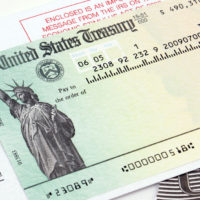Differences Between Good Debt and Bad Debt
Many people in the U.S. grew up being told that all debt is “bad” and that it should be avoided at all costs. However, you may have also been told that borrowing money for “good” purposes, such as buying a house, is okay. Very few people can likely get through life these days without taking on debt of some kind, so it’s essential to understand the difference between good and bad debt.
What Is Considered to Be Good Debt?
Good debt is still debt. It is money you’re borrowing for a purpose that makes it valuable. That means that good debt is typically money you borrow for something that will increase your total net worth, helps you build wealth, or increase your financial opportunities for the future. Good debt is typically an investment into something that will create a better payoff.
If you’re trying to determine whether your borrowing is a good debt, then you may want to consider calculating the potential return for your investment. For example, if you are borrowing money to go to school, it might be a good debt if it improves your ability to make more money for the rest of your life. You can calculate the potential versus what you would make without the degree and see if that education’s cost is worth it.
Examples of Good Debt
Good debts could come from a variety of sources. Here are some examples of the most popular types of debt that many consider being good debt:
- Mortgage on a house
- Loan to go to college
- Loan to buy a business
- Operating loan for your business
- Loan to invest in real estate
This isn’t an all-inclusive list, but these are all investments that create a higher potential payout down the road when you sell that asset or help you make more money. Some consider an auto loan a good debt because many people need a car to get to work, but that’s typically a misnomer as it is considered a bad debt.
What Is Considered to Be Bad Debt?
A bad debt is money you borrow that leads to more financial problems or obstacles for you in the future. High-interest consumer debt is considered bad debt because you’re not borrowing anything that will benefit you financially. Bad debt also typically funds depreciating assets and isn’t considered a strong investment.
Bad debt often leads to financial struggles as you borrow money for things you can’t afford and end up struggling to make payments on that debt. This can lead to a cycle of paying large amounts of interest on your purchases, making things much more expensive than they should be.
Examples of Bad Debt
Here are some examples of what many people consider to be bad debt:
- Consumer debt, such as department store cards
- Using credit cards for things you cannot afford
- Auto loans
- Borrowing more money than you can afford to pay
- Student loans for a degree that won’t help you earn more money
It’s important to note that the type of purchases you make when borrowing money is only one consideration of whether it is a good or bad debt. If you can’t afford to make the payments on what you’re borrowing, it’s a bad debt because it will hurt you financially. This is why it’s essential to ensure that any amount you’re borrowing still leaves you with a low debt-to-income ratio.
Considerations Before Taking on Debt
Before you decide to take on any debt, there are certain steps you should take to help you determine if it’s a good or bad debt opportunity. Each one will help you get your hands around your finances better and improve your overall decision-making so that your money doesn’t come back to hurt you in the future. Here are the things you may want to consider.
- Potential Return on Investment (ROI): What will the return on your investment be? For example, when you buy real estate, the chances of the return being higher than what you pay is pretty good.
- Affordability: Can you afford to make the payments in a way that will actually pay the debt off instead of just making interest payments?
- Personal Need: Do you need what you are purchasing to put yourself in a better financial position?
- Time to Payoff: Before taking on debt, you should know how long it will take to pay off that debt.
- Access to Other Money: Is there any other way to pay for your purchase? For example, if you’re borrowing money for school, then what can you do to lower the total amount of debt you must take out?
Overall, no decision to take on debt should be made lightly. Make sure you exhaust all avenues of finding money before taking on debt and then do what you can to limit the amount you’ll need to borrow.
How to Get Out of Bad Debt
If you’ve already taken on bad debt, the most important thing to do before borrowing for anything else is to pay off that debt. Bad debts can cripple your finances and damage your credit if you cannot make the payments. It’s important to take action and be disciplined with your finances to pay off the debts as soon as possible.
If you have a bad debt, you’ll want to pay as much as you can to budget on that debt until it is paid off. Making only interest payments won’t get you out of debt when you borrow on credit cards or any other consumer debts. Calculating how much you owe and how quickly you may be able to pay off that debt should be priority number one. If you don’t make enough to pay off the debt, consider finding additional income.
If you have multiple debts, consider how debt consolidation can make it easier. Making a single payment every month is much easier to manage and might help you pay off those debts faster.
Bottom Line
For a debt to be considered a “good” one, you’ll need to borrow to see a future return. However, no debt should be taken lightly. Every single type of debt has the potential to turn into bad debt if you can’t afford it when you decide to borrow. It’s important to know what you’re getting into and understand how you will pay off any debt before deciding to move forward.






